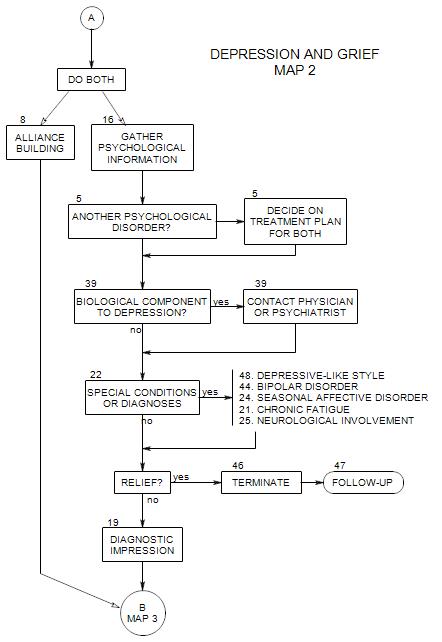Map 2 begins with a reminder that formal therapy and alliance building continue to occur simultaneously throughout treatment. Section 8 continues to describe alliance building, and the next treatment step is to gather information. Section 16 discusses that aspect.The map continues to examine depression as derivative of other issues – another psychological disorder [Section 5] or a biological condition [Section 39]. It then considers some sources or types of depression that may respond to specific treatments [Section 22].
For some patients, depression may be a reaction to these issues and sources. If so, treatment of the issue or source may be sufficient, and the patient can terminate. The possible sources considered here include
- Chronic fatigue [Section 21]
- Bipolar disorder [Section 44]
- Seasonal Affective Disorder [Section 24]
- Some kind of neurological involvement [Section 25]
- Depressive-like style [Section 48]
If the patient’s depression continues, this is a good time to review your diagnostic impression [Section 19] and continue on to Map 3.
If the patient’s depression is relieved, it may be time to terminate [Section 46]. If you do terminate the patient, you can also plan for a follow-up [Section 47] at a later time.
